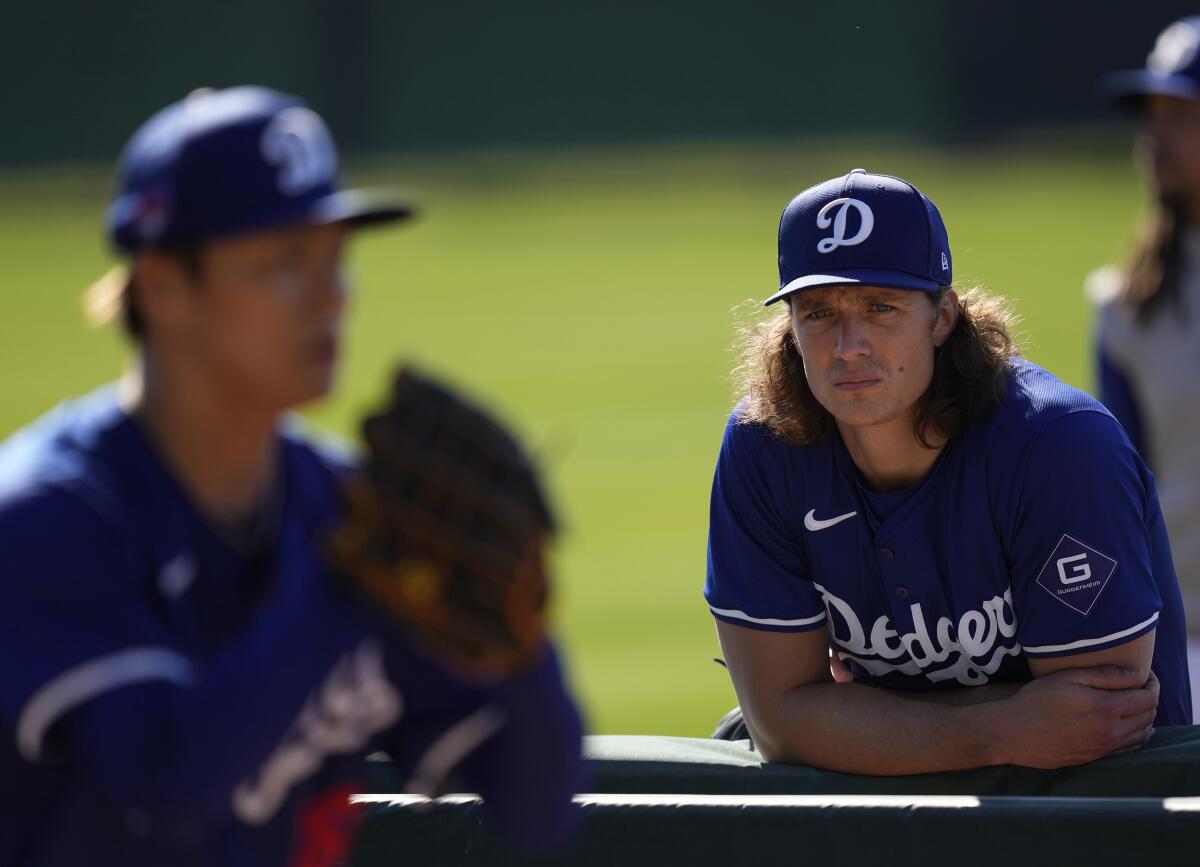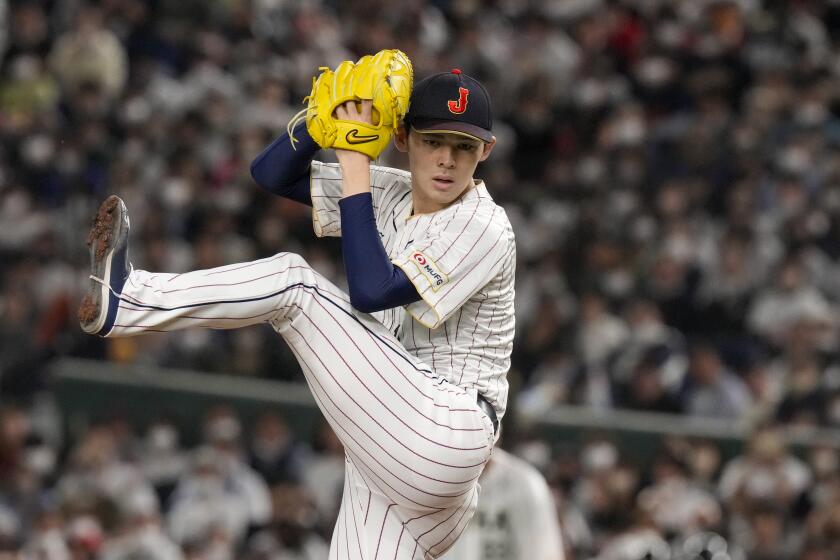While Sasaki’s tools alone — a triple-digit fastball, wipeout splitter and fluid movements from his 6-foot-4 frame — would have made him a highly coveted free-agent target, the financial constraints he faced turned him into a generational bargain, similar to when Shohei Ohtani (then also 23) first signed with the Angels in December 2017.
Because Sasaki was classified as an international amateur — putting him in the same boat as teenage prospects from Latin America — he could receive only a standard minor-league contract with a signing bonus capped by the amount of money in his new team’s international bonus pool.
The Dodgers had only $5.146 million in their bonus pool, tied for the smallest amount in the league, but made two trades Friday with the Philadelphia Phillies and Cincinnati Reds to acquire more and complete Sasaki’s $6.5 million signing.
That will represent the largest cash outlay the team will owe him for a while.
Once Sasaki is added to the Dodgers major league roster at the start of the season, the team can pay him as little as the league minimum salary his first three seasons. In 2025, that will amount to $760,000. In 2026, it will be $780,000. The 2027 minimum salary has not yet been decided. The team could pay him above that scale but likely wouldn’t exceed it much.
Starting in 2028, Sasaki will finally be able to start earning significant raises through MLB’s arbitration system, though those salaries could still be seen as a bargain.
Ohtani, for example, agreed to an $8.5-million contract with the Angels that covered his first two seasons of arbitration in 2021 and 2022, before then negotiating a $30-million salary for 2023. In all, Ohtani made just under $40 million in his six seasons with the Angels — during which time he won two MVP awards, a Rookie of the Year and was a three-time All-Star.
If Sasaki lives up to expectations, he could make a similar (if not somewhat larger) amount in his six seasons of team control. But even when also accounting for his signing bonus, that might make the overall financial commitment less than a third of the $182 million the Dodgers gave to Blake Snell in a five-year deal this winter, for comparison.
Sasaki will also have the ability to bolster his earnings over his first three years through MLB’s new pre-arbitration bonus pool, which rewards top-performing pre-arbitration players around the league through a pool of money to which all teams contribute. But that’s no major windfall either. This year’s top earner, Bobby Witt Jr. of the Kansas City Royals, netted only an extra $3.1 million. Paul Skenes, the star rookie pitcher of the Pittsburgh Pirates, collected an additional $2.2 million.













